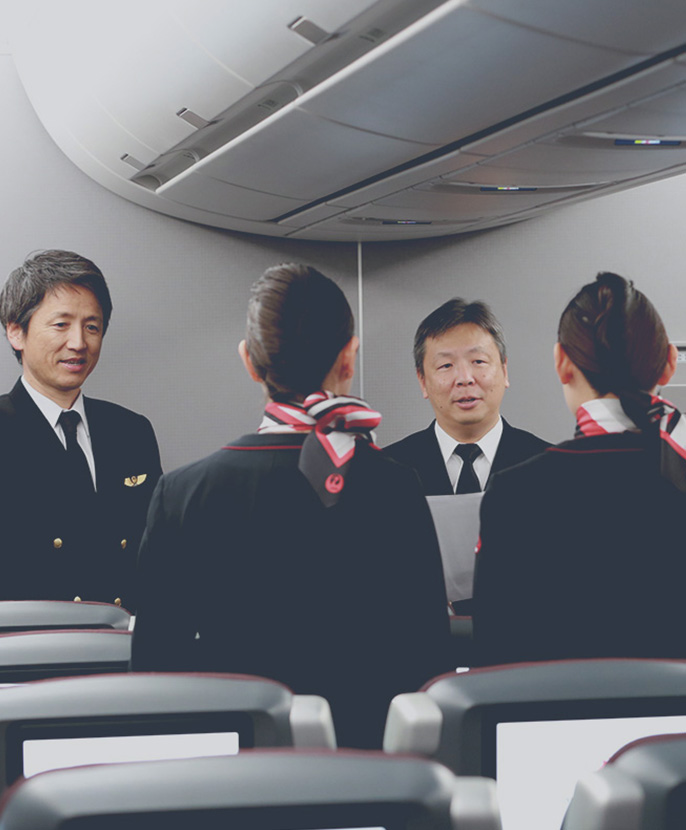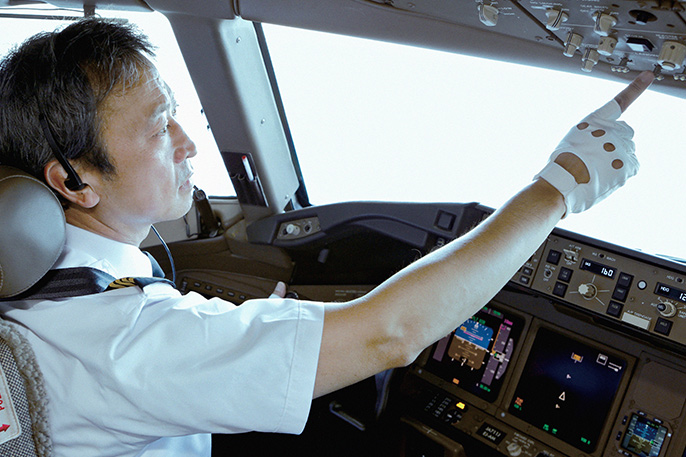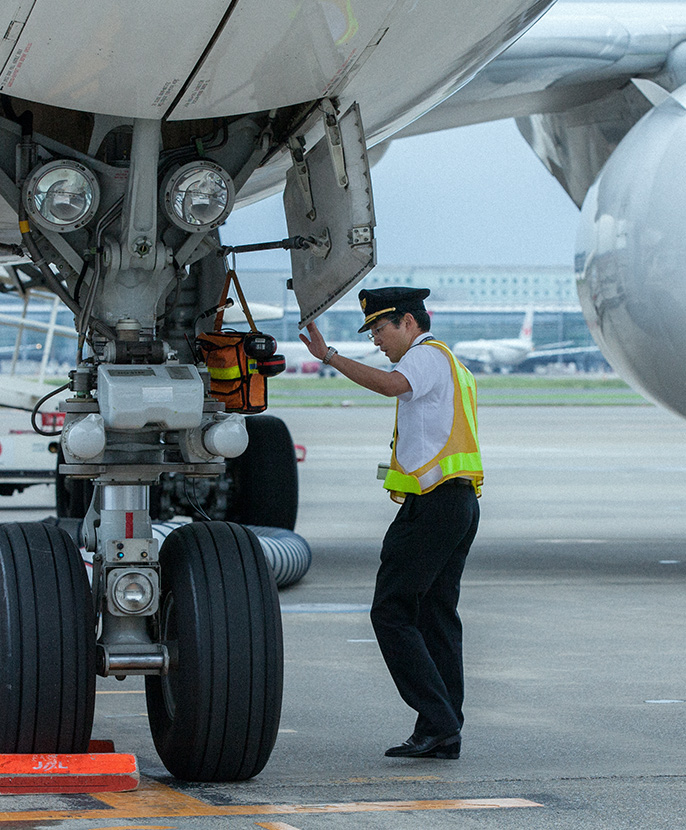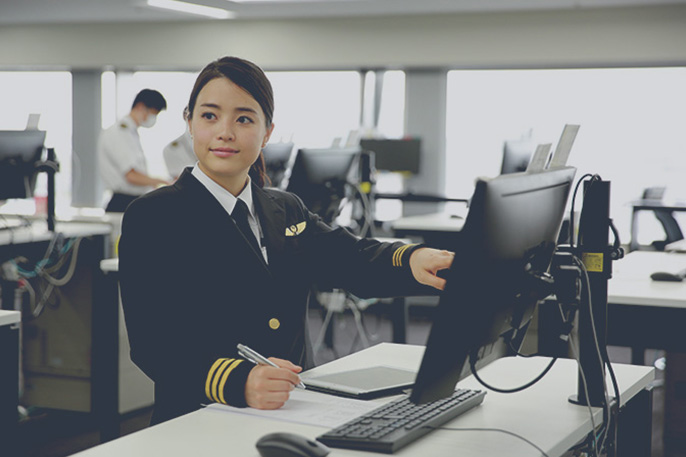
BATON 06
Pilot
The anchor leg runner
who receives the baton of trust

ABOUT
The pilot has the mission of operating aircraft and carrying passengers safely to their destination. It seems like a glamorous job, but it takes a lot of effort, such as keeping mentally and physically healthy and continuously improving knowledge and technical skills. Pilots maintain close communication with various staff, centering on the Captain, who assumes final responsibility for the flight, makes decisions, and remains calm to provide safe and comfortable flights.

INTERVIEW
Aircraft which carry many passengers are able to take off safely through the hard work of many staff engaged in many previous processes. The pilot is the anchor leg runner who carries the baton to the goal. While aware that "I am the lead runner," the pilot operates the aircraft and carries the thoughts of the customers and other staff.
This awareness is essential when communicating with cabin attendants and maintenance engineers. They take special care when communicating with the Captain, as the Captain is their leader. However, work cannot be done if everyone feels hesitant. Therefore, the Captain actively communicates with staff to create an atmosphere to freely share and exchange information. However, when making the final decision, such as whether to operate the flight in a serious situation, the Captain draws a line and makes decisions while placing safety as top priority. The Captain always keeps in mind that "everyone's eyes are on him/her" in any situation. If the Captain is nervous, the customers and staff will sense this. Therefore, pilots must make quick decisions and remain calm to produce the best overall effect.
The baton pass includes passing on techniques and knowledge to operate high quality and comfortable flights to the next generation of pilots. Even if the Captain is meeting the co-pilot of a flight for the first time, we do our best to give instructions and pass on know-how. While scolding and encouraging the co-pilot, we are mindful to maintain communication without putting excessive pressure. Pilots must be fit and healthy both physically and mentally. We must undergo regular examinations and pass them every time. I train myself everyday in my private time. I would like to pass on my attitude of self-control to younger pilots.
PASS THE BATON
FLIGHT

From the JAL Report
Operating aircraft
Takeoff and landing are phases of a flight in which pilots must pay most attention to. Pilots are prepared to react appropriately to any situation calmly and focused, and apply the abilities of both the Captain and co-pilot. While cruising, they keep close watch of cockpit instruments and weather conditions and operate the aircraft, while imaging the faces of passengers seated outside the cockpit and selecting the optimal route and altitude.
AIRPORT

Pre-
flight inspection
The Captain also inspects the aircraft, which has been carefully checked by mechanics, with his/her own eyes. If the Captain feels the least abnormality, he/she informs the mechanics in order to ensure a safe and secure departure.
AIRPORT

Briefing
Before departure, pilots check aviation information such as weather forecasts, aircraft maintenance conditions, airports and airspace, and necessary information for flight operations such as passenger information, and consider the flight plan for that day. They select routes and altitudes with as little turbulence as possible, and image the flight keeping in mind on-time operations and fuel efficiency.
